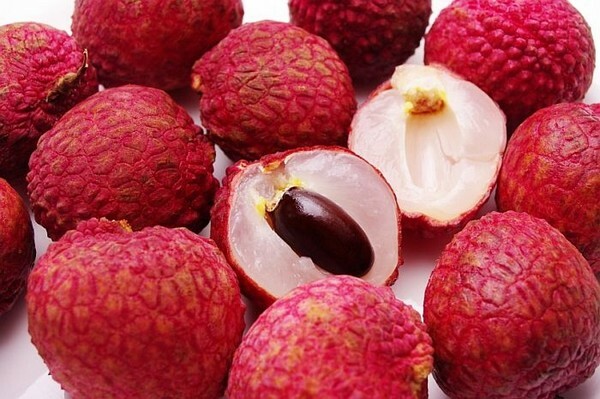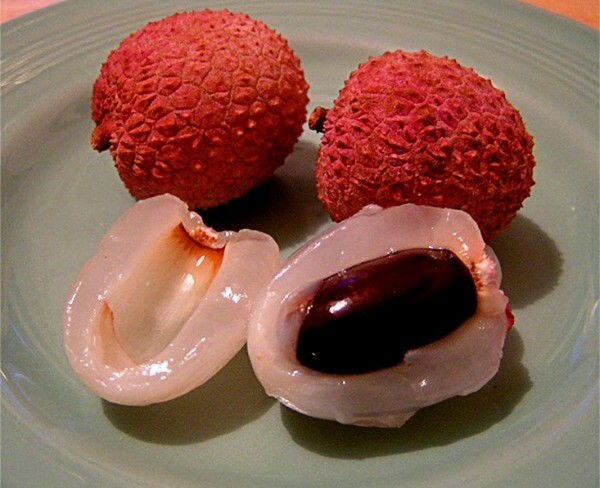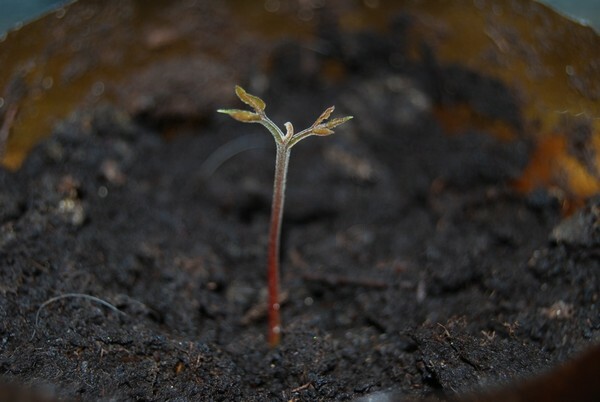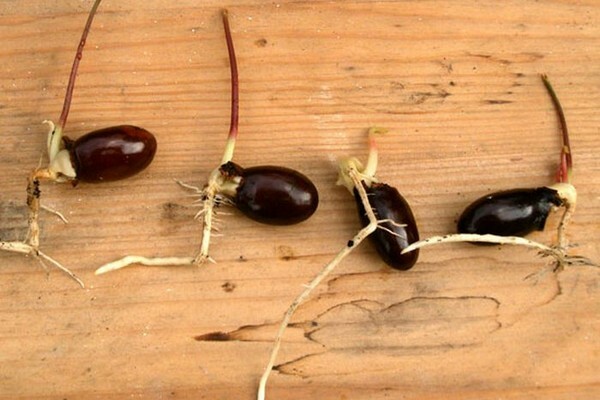- Description
- Useful properties
- How to eat?
- Growing at home
The unusual lycian tropical fruit is becoming more affordable in stores and is beginning to arouse interest. This is not surprising, because besides the pleasant taste, it has many useful properties, which will be interesting to learn before you try it for the first time.

Description
A fruit introduced from the tropics called lychee has an oval or ovoid shape. Small fruits are covered with red, bumpy skin, and the pulp beneath it has a jelly consistency and milky-white color. Inside the fruit is an elongated bone. The lychee's pulp has a delicious smell and unusual for the usual fruits, a refreshing sweet and sour taste.
This is the fruit of an evergreen tropical tree that grows in the dry subtropical forests of Thailand, Vietnam, Cambodia, Africa, China, America. Possessing a spreading crown, the tree can reach 30 meters in height. There are also other its names - ligi, fox, Chinese plum, lynch, lacy. Because of its small size and appearance, lychee often raises the question of fruit or berry. However, he has only one bone, so it is correct to refer this fruit to fruits.
The branches of the tree cover the brilliant dark green foliage of the lanceolate form. Litchi flowers do not have petals at all. They are long( up to 70 cm) umbellate inflorescences with yellow cups, from which then bunches of fruit are formed. The harvesting period falls on May-June. Although most flowers are not pollinated and the yield is 4-5 times less than flowers, it still leaves quite abundant.
Useful properties
Litchi fruit has a very rich vitamin composition, which provides it with outstanding useful properties. These fruits contain vitamins C, E, H, K, group B, as well as many microelements:
- potassium;
- iron;
- phosphorus;
- fluoro;
- copper;
- calcium;
- zinc;
- magnesium;
- iodine;
- Manganese.
In addition, they contain a small amount of fats, carbohydrates, proteins and plant fibers( fiber).Low calorie lychee( only 75 kcal per 100 g) is combined with their ability to quickly satiate and satisfy hunger, so they are well suited for people who are prone to fatness or diet.
Thanks to the large content of vitamin C and potassium, the exotic fruit of litchi can enter the diet of people with heart disease and vascular system. In Chinese folk medicine, it is used to treat and prevent atherosclerosis, lower cholesterol, treat cancer in the early stages and tonify the entire body. And the inhabitants of Nepal, India and Pakistan consider the decoction from the rind of these fruits to be "an amorous means".In addition, this broth has the ability to remove from the body excess fluid, normalizes the work of the kidneys.
Also among the useful properties of lychee are the following:
- the ability to quench thirst during hot season;
- regulation of the digestive system, control of constipation;
- weight loss;
- reduced blood sugar.
It is useful to eat with anemia, gastritis, ulcers, diabetes, diseases of the pancreas and liver. In addition, lychee has antioxidant effects on cells, so it is able to rejuvenate the body.

It is often recommended to include lychee in a baby diet, as the flesh of these fruits is rich in calcium, phosphorus and magnesium, which help strengthen bones and are necessary during a period of active growth.
Thanks to the richness of the composition, litchi fruit is beneficial for the beauty and health of the skin. The vitamins and minerals contained in them stimulate the restoring work of its cells, the production of its own collagen, thereby contributing to increasing the hydration and elasticity of the skin. With regular use of litchi, the skin becomes radiant, clean, gets rid of pimples and spots.
Contraindications
The fruit of lychee with its benefits practically does not harm the body. He has no special contraindications, only recommendations on the optimal dosage. Adults will be enough to eat a day not more than 200-250 grams of these fruits, and children - up to 100 grams. In case of abuse, an allergic reaction may occur, which manifests itself as acne on the skin or on the oral mucosa.
In addition, cases of individual fruit intolerance are possible, so people prone to food allergies should try lychee cautiously and in small portions. It is also not recommended to eat them with gout and some forms of diabetes, so before using lychee people suffering from these diseases should consult their doctor.
How to eat?
When confronted with unfamiliar products, it is advisable to learn in advance how it is eaten, this also applies to fruit called lychee. It is best to eat it fresh. Although they tolerate a prolonged freeze well, thawed fruits are more suitable for use in cooking with subsequent processing.
When buying lychee, you should pay attention to the peel. Its color should be red, the fruit should not be too soft or with visible damage. Brown shades indicate that the shelf life of the fruit came out.
It is best to choose fruits that are joined together in a bunch, because individually larvae almost immediately deteriorate
The selected fruits are better to eat immediately, as the longer they are stored, the worse the taste becomes. At a temperature of 1-7 degrees, litchi in a bunch can "hold out" no more than a month, and at room temperature - only three days. Before eating, the fruit should be rinsed under running water and gently peeled off. After removing the stone, the fruit can be eaten.
In addition, lychee can be used for making sauces and various desserts, as well as adding to champagne or dry wine. Another option is to serve meat or fish dishes, instead of olives. Lychee is well combined with game, lamb or pork, and also good for salads. In China, these fruits are made with a rather specific taste.
Growing at home
Many people like to grow exotic plants at home. Most often they are not able to bear fruit in the apartment, but can serve as a decorative element. Litchi, like most other exotic fruits, when grown at home does not bear fruit. At the same time he is rather demanding of the conditions. It is important for him to provide a suitable temperature regime and humidity, close to the natural subtropical ones.
Lychee does not tolerate a low temperature, so they can not be grown outdoors as an element of landscape design, but it is quite capable of settling in a greenhouse or a greenhouse, as well as in a roomy environment.

. For commercial purposes, lychees are propagated by cuttings, since only this way makes it possible to preserve the distinctive varietal characteristics of the parent plant. If the main purpose of cultivation is decorative, you can try to grow a lychee fruit from a bone.
For breeding, you should give preference to the maximum ripe fruit, otherwise the bone will not germinate. A good seed material can be obtained from fruits with dense red skin, pronounced odor and translucent sweet flesh. In some fruits, the bones remain undeveloped, wrinkled, irregular in shape. To use them for planting does not make sense, such seeds also will not germinate.
Seed extracted from the pulp retains only 4-5 days, so it's best to plant them immediately. For germination, choose a small pot with holes to drain excess water. Its bottom is covered with a layer of drainage( for example, expanded clay), and then filled with soil for flowers. Before planting the seeds, the ground in the pot is watered abundantly until it all becomes wet, and let the excess flow through the drainage holes.
A stone is planted in the middle of the pot to a depth of 2-3 cm. After planting, it is necessary to provide the seedling with suitable conditions - a temperature within 225-35 degrees and constant entrainment of the upper soil layer. As a rule, most seeds germinate in the period from 1 to 4 weeks after planting, but it also happens that this can happen later. Sprouted Litchi seed bone gives powerful, fast growing roots, which are seen in the photo below:

After the first leaves appear, the litchi pot is moved to a lighter place, but not under direct sunlight. The trees grow quite quickly and in a few weeks can reach 20 cm in height. After that, usually the growth rate slows down and in the next two years the height of the seedling is unlikely to exceed 30 cm. During this period, all plant forces will go to the development of the root system, so a regular transplant will be required to a larger pot. It is carried out three times in the first two years of plant life.
It is very important to protect the tree from drafts and direct sunlight, and also carefully monitor the maintenance of soil moisture. At the same time, lychee does not tolerate water stagnation, therefore, excess water must be removed from the pan in time and in no case should it be planted in a pot without drainage holes.
If climatic conditions permit, the tree can be grown from bones and in open ground. In this case, after about 15-20 years, it can bear the first fruits. Although they are likely to differ significantly in taste from the "parent".
Despite its exotic nature, lychees are becoming more popular. Almost everyone who has ever tried it, becomes an ardent admirer of this small fruit. A low calorie, along with an abundance of useful properties, make it an almost necessary component of any diet.
